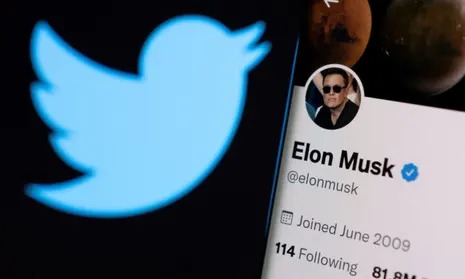
Since purchasing the social media platform, the tech mogul has cut jobs and lost the trust of investors, leading to a decline in revenue and public perception
On October 26, Elon Musk surprised Twitter’s staff by bringing in a sink one day before he purchased the platform for $44 billion. It was a sign that his ownership would be anything but conventional. Musk’s reign as Twitter’s owner has been marked by unpredictability and controversy, resulting in him losing the title of the world’s richest man. Here are some of the noteworthy moments from the past 10 weeks:
Reducing the number of employees by half through termination
Immediately after Musk’s acquisition of Twitter, he terminated the employment of top-level executives such as Parag Agrawal, the CEO, Ned Segal, the chief financial officer, and Vijaya Gadde, the head of legal policy, trust, and safety. Shortly thereafter, he laid off half of the company’s 7,500 employees, with departments like the communications team, the curation unit that helped combat disinformation, and the human rights team being impacted.
Following the firing of senior executives, Elon Musk’s takeover of Twitter resulted in a series of departures. In one instance, he set a mid-November deadline for employees to commit to working “long hours at high intensity” or leave with three months’ severance pay, resulting in an estimated 1,200 staff departures. Additionally, Twitter reportedly let go of 4,000 contractors in fields such as content moderation and engineering. Musk responded to predictions of Twitter’s downfall with a tweet in late November, but the platform did experience an outage on 28 December, which affected some users.
Advertisers felt alienated and there were setbacks in subscription efforts
After taking over Twitter, Musk acknowledged that the platform had experienced a significant decrease in revenue, which he attributed to advocacy groups pressuring advertisers regarding safety and content guidelines under his leadership. Audi, Pfizer, and General Motors were among the companies that halted advertising on the platform in response to the takeover. This is a significant problem for a company that generated over $5 billion in revenue in 2021, with advertising accounting for over 90% of its earnings.
Efforts are being made to repair the damage caused by Musk’s takeover of Twitter. The platform is collaborating with the World Federation of Advertisers, whose membership accounts for 90% of global ad spending, to address advertisers’ concerns. Additionally, the re-launch of Blue has not encountered a resurgence of the fake account problem. The new version of Blue offers verified status, indicated by a blue tick or checkmark, for a fee of $8 per month or $11 per month on an iPhone. Musk is of the opinion that mass verification is the best way to combat vexatious spam accounts, which he has spoken out against on Twitter. The subscription service also promises other perks such as an edit button, a 50% reduction in ads in a user’s feed, and the ability to post longer tweets.
The process of restoring accounts that were previously banned
Musk has taken actions to lift suspensions on several accounts, including those of Donald Trump, Andrew Tate, and Jordan Peterson, among others. However, US rapper Ye (Kanye West) had his account reinstated briefly, only to be suspended again after posting a controversial image. Musk also introduced a new content policy that allows for “freedom of speech, but not freedom of reach,” where tweets with negative or hate speech would be deboosted and placed away from advertisements.



